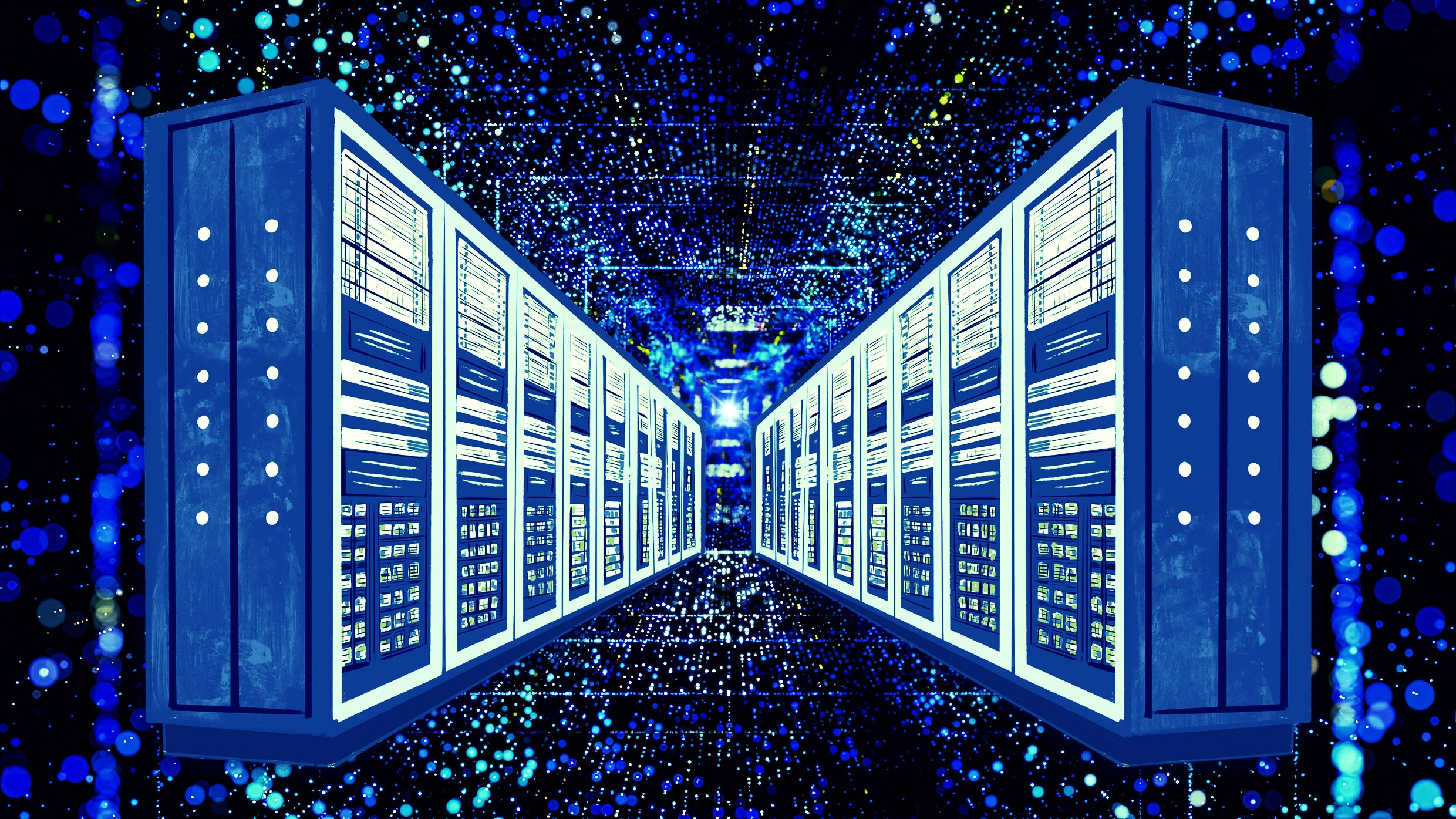Picture a data center on the edge of a desert plateau. Inside, Row after Row of servers Glow and Buzz, Moving Air Through Vast Cooling Towers, Consuming More Electricity Than the Surrounding Towns Combined. This is not science fiction. It is the reality of the vast ai computer clusters, Often described as “ai supercomputers” for their sheer scale, that train today’s most advanced models.
Strictly speaking, these are not supercomputers in the classical sense. Traditional supercomputers are highly specialized Machines designed for scientific simulations Millions of CORES. What Drives AI, by contrast, are massive clusters of GPUS or Custom Accelerators (Nvidia H100s, Google Tpus, Etc.) Connected through High-Bandwidth Interconnexes, Optimized for Matrix multiplications at the heart of deep learning. They are not solving equipment for weather forecasts: they are churning through trillions of tokens to predict the next word.
Still, The Nickname Sticks, Because his performance, Energy Demands, and Costs are comparable to, or beyond, the World’s Fastest Scientific Machines. And the implications are just as profound.
A Recent Study of 500 AI Compute Systems World Found that their performance is doubleing every nine months, while both cost and power requirements double every year. At this pace, the frontier of artificial intelligence is not simply about better algorithms or smarter architectures. It is about who can afford, power, and cool these gigantic machines, and who cannot.
The exponical moat
When performance Doubles Every Nine Months but Cost Doubles Every 12, You Create An exponitive moat: Each Leap Forward Pushes The Next Frontier Furtier Out of Reach For All But A Handful of Players.
This is not the family story of “Open-Source vs. Closed-Source Models”: It is more fundamental. If you cannot access the Compute Substrate (The Hardware, Electricity, Cooling, and Fabs Required to Train The Next Generation) You are not even in the race. Universities cannot keep up. Small Startups Cannot Keep Up. Even many many governments cannot keep up.
The study shows a stark concentration of capability: the most powerful ai clusters are concentrated in a more corporations, effectively privatizing access to the cutting edge of Machine Intelligence. Once Compute Backets the bottleneck, the invisible hand of the market does not produce diversity. It producer monopoly.
Centralization vs. democratization
The rheteric Around Ai often Emphasizes Democratization: Tool Made Available to Everyone, Small Actors Empowered, Creativity Unleashed. But in Practice, The Power to Shape Ai’s Trajectory is Shifting towards the owners of Massive Compute Farms. They decide models are feasible, which experts get run, which approaches receive bills of tokens of training.
This is not just a matter of money. It is about infrastructure as governance. When only three or four firms control the largest ai clusters, they effectively control the boundaries of the possible. If your idea requires training a trillion-paarameter model from scratch, and you are not inside one of that that firms, your idea remains just that: an idea.
Geopolitics of Compute
Governments are begining to notice. At the 2025 paris ai action summit, nations pledged billions to upgrade national ai infrastructure. France, Germany, and the UK are Each Moving to Expand Sovereign Compute Capacity. The United States have launched large-specale initiatives to accelerate domestic chip production, and china, as always, is playing its game, pourning resources into massive wind and solar bills to go Not only chips, but the cheap electricity to feed them.
Europe, as usual, is caused in the middle. Its regulatory frameworks may be more advanced, but its ability to deploy ai at scale depends on where it can secure energy and compute on competitive terms. Without that, “Ai Sovereignty” is Rhetoric, Not Reality.
And Yet, there is a Darker Irony Here. Even as governments race to Asserty Sovereignty, The Real Winners of the AI Arms Race May Be Corporations, Not Nations. Control over Compute is concentrating so quickly in the private sector that we are edging closer to a Sceneario long depicted in science fiction: Corporations wailading more power than states, not only But in shaping the very training of human knowledge. The balance of authority between governments and companies is shifting, and this time, it is not fiction.
Environmental Reckoning
There is also a physical cost. Training one frontier model can require as much electricity as a small city uses in a year. Cooling Towers Demand Enormous Volumes of Water, and While Much of it is returned to the cycle, siting matters: in water-text regions, the strain can be significant. The carbon footprint is similarly Uneven. A model trained on grids dominated by coal or gas produces orders of magnitude more emissions than one trained on grids power powered by renewables.
In this sense, the “AI Sustainability” Debate is really an energy debate. Models are not green or dirty by themselves. They are as green or as dirty as the electrons that feed them.
What efficiency cannot buy
Efficiency alone will not solve this problem. Each Generation of Chips Gets Faster, Each Architecture more optimized, but the aggregate demand continues to risk faster than the gains. Every Watt Saved at the Micro Level is consumed by the macro expansion of ambition. If Anything, Efficiency Makes The Arms Race WorsE, Because It Lowers The Cost Per Experiment and Encourage even more experiences.
The result is a treadmill: More Compute, More Power, More Cost, More Centralization.
What to demand
If we want to avoid a future in which ai’s destiny is set by the boards of three companies and the ministry of two superpowers, we need to treate compute as a public cONCERN. That means demanding:
- Transparency About Who Owns and Operates The Larget Clusters.
- Auditability of usage: what models are being trained, for what purposes.
- Shared infrastructureFunded publicly or through consortia, so that researchers and smaller firms can expert without asking permission from Trilion-Doller Corporations.
- Energy AccountabilityRequiring operators to disclose not just aggregate consumption but sources, emissions, and water footprints in real time.
The debate should not stop at “which model is safest” or “Whoch dataset is fair.” It should extend to who controls the machines that make the models in the first place.
The machines behind the machine
The next control point in ai isn’t software: it’s hardware. The Massive Compute Clusters that Train The Models are the Real Arbitors of Progress. They decide what’s possible, what’s practical, and who gets to play.
If history Teaches Anything, it is that when power Centralizes at this scale, Accountability Rarely Follows. Without deliberate interventions, we risk an ai ecosystem where innovation is bottlenecked, oversight is optional, and the costs, from from final or environmental to Human, AR HIDDEN UNTIL IS TOO Late.
The arms race of ai “supercomputers” is alredy underway. The only question is wheether society chooses to watch passively as the future of intelligence is privatized, or wheether we recognize that the machines behind the machines are Just as Much Just SCRutiny ASTIED Algorithms they enable.
The application deadline for fast company’s most innovative companies is Tomorrow, October 3, at 11:59 PM pt. Apply today.











